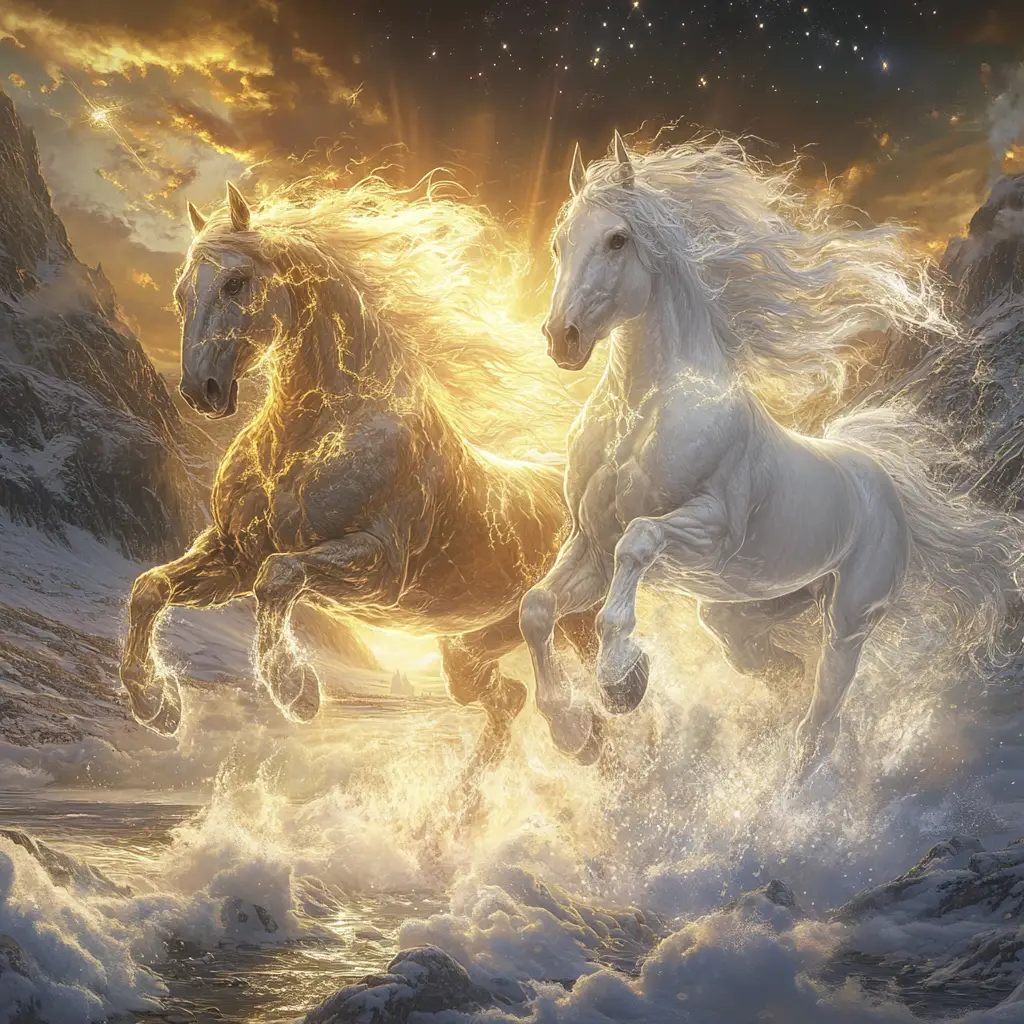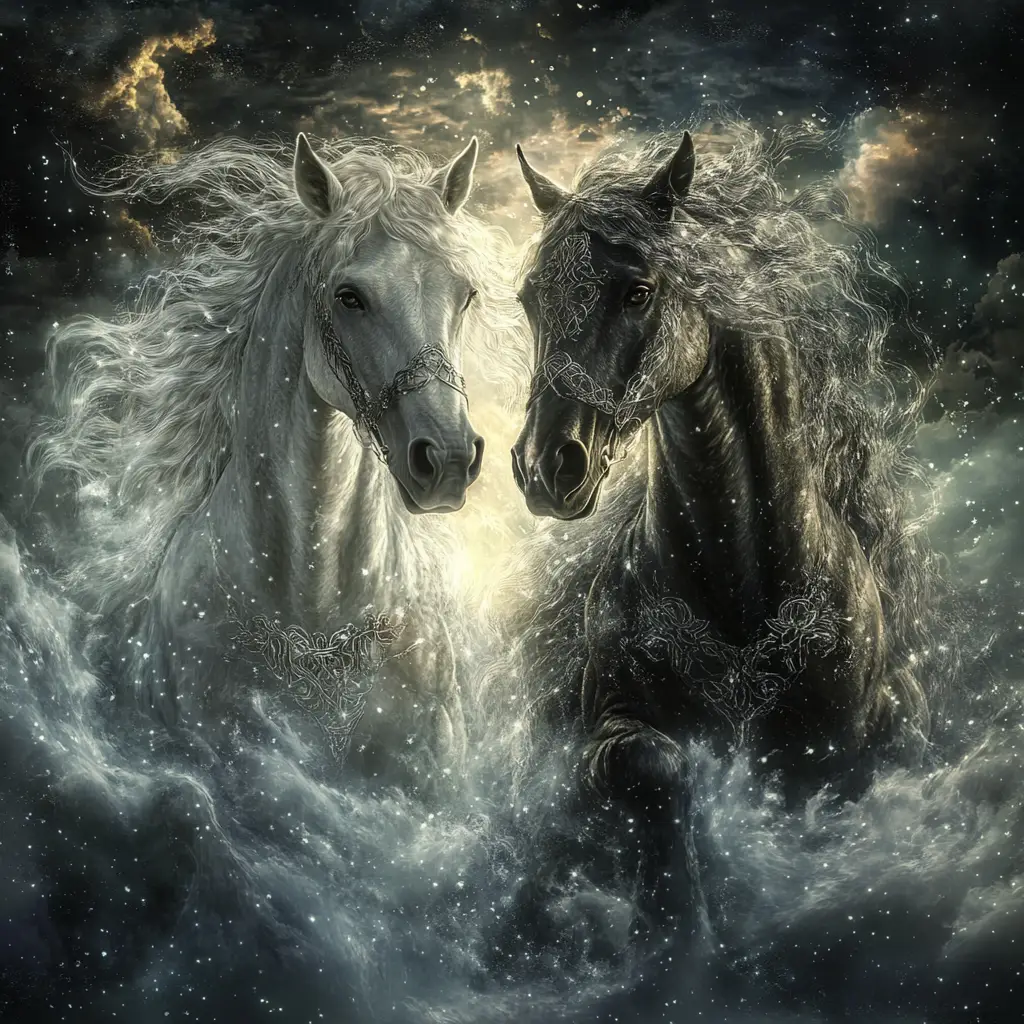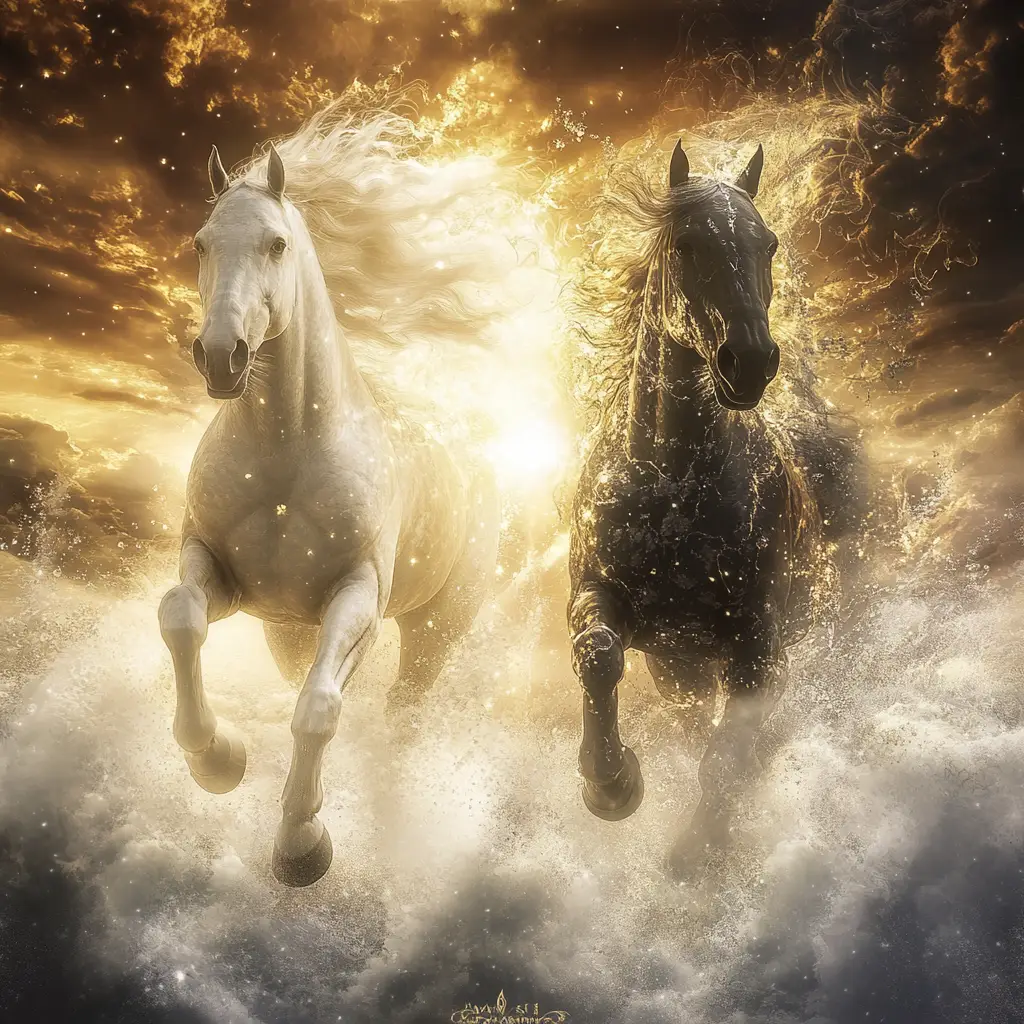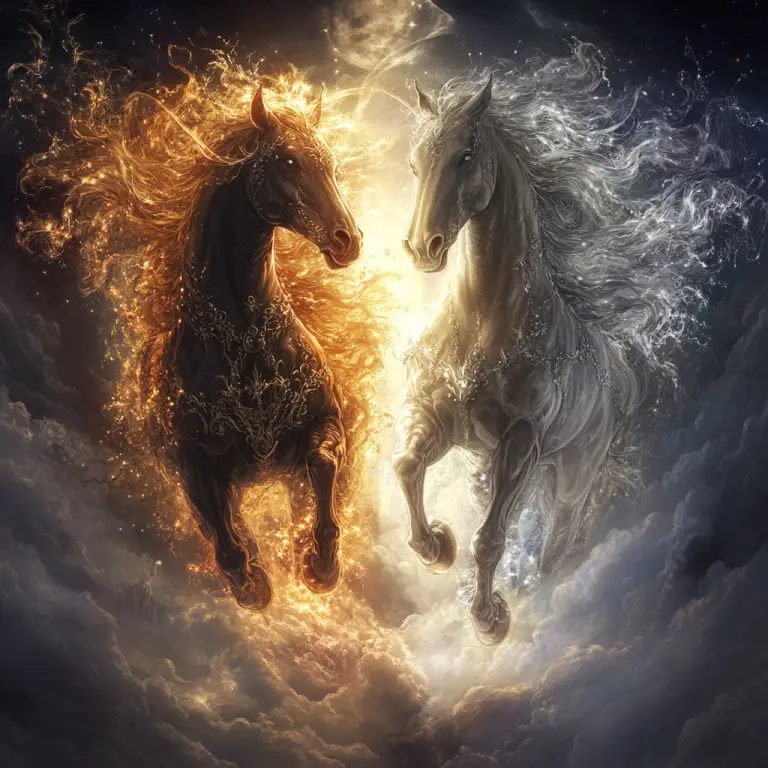Skinfaxi and Hrímfaxi: The Horses of Day and Night in Norse Mythology
In Norse mythology, Skinfaxi (“Shining Mane”) and Hrímfaxi (“Frost Mane”) are two cosmic horses that pull the chariots of Day (Dagr) and Night (Nótt), personified beings responsible for the cycles of time. These horses and their radiant or frosty manes symbolize the eternal passage of day and night, illuminating the importance of balance and rhythm in the cosmos.
Skinfaxi – The Horse of Day
Owner: Dagr (Day), the son of Nótt and Dellingr, a god associated with dawn.
Skinfaxi has a gleaming, radiant mane that lights up the skies as it travels across the heavens.
Skinfaxi pulls the chariot of Day, spreading light and warmth to the world.
The shimmering mane represents the sun’s brilliance and life-giving energy.
Hrímfaxi: The Horse of Night
Owner: Nótt (Night), the dark and mysterious personification of night.
Hrímfaxi’s mane is frosted, and its movements leave dew and frost in its wake.
Pulls the chariot of Night, veiling the world in darkness and cooling the earth.
Its froth creates morning dew, symbolizing the restorative powers of night.
Symbolism of Skinfaxi and Hrímfaxi
Cosmic Duality
The pair embodies the balance of opposites: light and darkness, warmth and cold, day and night.
They reflect the Norse view of the interconnectedness of natural cycles.
Time and Continuity
Their constant journey across the sky illustrates the passage of time and the inevitability of change.
Divine Roles
As celestial beings, Skinfaxi and Hrímfaxi signify the gods’ control over the natural world and the maintenance of order.
Appearance in Norse Texts
In the Prose Edda by Snorri Sturluson, Skinfaxi and Hrímfaxi are described as essential elements of the Norse cosmology:
Nótt rides Hrímfaxi first, followed by Dagr with Skinfaxi, explaining the transition from night to day.
Their descriptions emphasize the mythological significance of natural phenomena, such as sunlight and dew.



